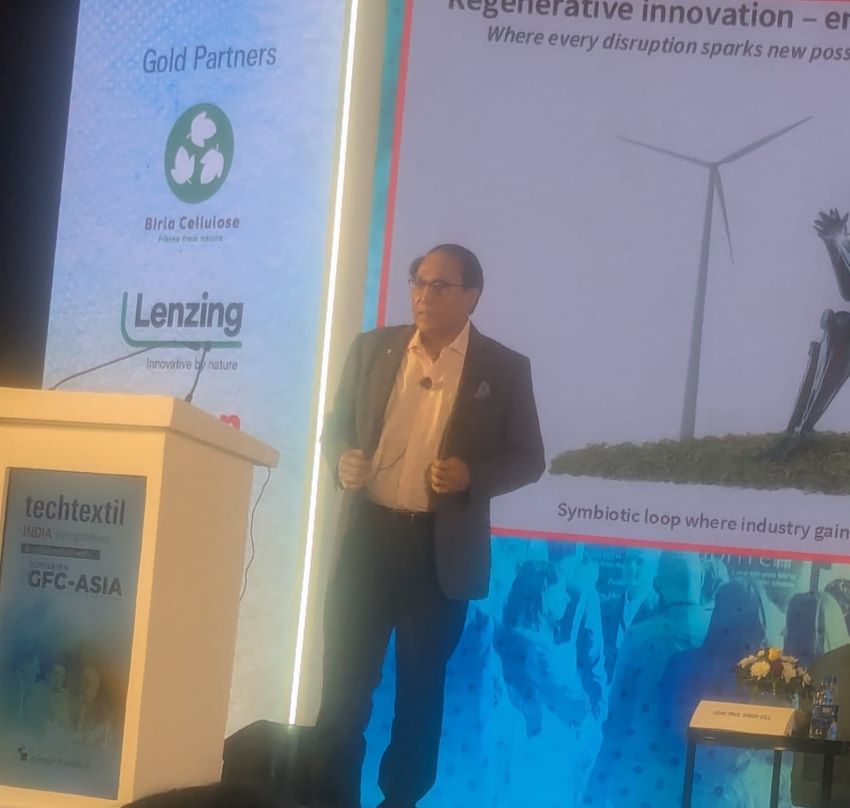FW
UK’s Langholm-based clothing retailer Edinburgh Woollen Mill, is facing charges for labeling scarves as “100 per cent cashmere” while being allegedly mixed with other material. The retailer, which has 265 high-street stores, is embroiled in a trial with growing concerns that cashmere is being blended with sheep's and yak's wool and synthetic products. The company outsources its cashmere, but insists it is subject to "robust independent testing" by experts in order to ensure its authenticness.
In fact, fake or mixed cashmere has been the bane of fashion industry for quite some time. Luxury cashmere jumpers may not be what they seem with evidence of fraud and fake. Cheap alternative materials - even rat fur, in one case - are being woven into garments. Some mills label scarves as 100 per cent cashmere while they are actually a mix of cashmere and other materials.
Two years ago a million items of cashmere clothing seized from Chinese-run firms in Italy were found to be a mixture of acrylic, viscose and fur from rats and other animals. Global cashmere production is about 7.5 million kg. However, sales of products carrying the name are much higher. There are not enough cashmere goats in the world to produce the amount of cashmere that is on sale.
The more basic cheats use acrylic or polyester in the blend. A lot of the blends will have 50 per cent or 60 per cent cashmere and 50 per cent or 40 per cent modified sheep or yak wool. Much of the cashmere that is on sale and sold as 100 per cent cashmere has a percentage of modified wool. Cashmere factories in China use a wool stretching machine, which can be used to make finer wool fibers. These are then blended with cashmere, which is sold as 100 per cent cashmere.
Pashmina shawl weaving, an ancient cottage industry of Kashmir, provides livelihood to thousands of families from both urban and rural areas. While women do the basic processing of dusting, combing and spinning, men weave the yarn into elegant shawls which are in high demand at the national and international level.
Presently there are around 20,000 weavers involved in shawl making. But power looms are souring the picture. When a hand spun pashmina shawl costs around Rs 10,000 in the market, the one blended with silk or other fibers and made on a power loom is priced between Rs 3000 to Rs 3500. A weaver normally earns about Rs 800 to Rs 1000 from handloom and weaves up to six shawls a month. However hundreds of the shawls can be woven in a month with power looms.
The introduction of power looms has affected thousands of pashmina artisans. They are now either shifting to other jobs or are compelled to work for lower wages. Over three lakh women have been hit. To help women, the backbone of the Kashmiri pashmina industry, a foot driven spinning wheel has been introduced for them.
Normally, a woman spins 2.5 grams to three grams of pashum a day but this spindle enables her to spin up to 10 grams a day. Though the spinning wheel costs Rs 5000, it is being provided to women for Rs 1000.
Hosiery workers in Tamil Nadu have got a pay hike.
In addition to the minimum rates of basic wages fixed, employees will also have to be paid dearness allowance. Dearness allowance is linked to the average Chennai city consumer price index number for the year 2000, which is 475 points, with base year being 1982 and is equal to 100 points. For every rise of one point over and above 475 points, an increase of Rs 3.80 per month shall be paid as dearness allowance.
DA shall be calculated on April 1 of every year on the basis of the average of the indices for the preceding twelve months, namely, from January to December. Tirupur, a city of six lakh people in Tamil Nadu, produces 90 per cent of India’s hosiery and exports hosiery and cotton garments worth Rs 12,000 crores a year. The factories employ thousands of women. The overwhelming majority of all economic activity in Tirupur centers on the garment trade.
Over the last three years or so, Tirupur’s exporters have had to face four main challenges: the recession in the US, volatility in the price of cotton yarn, environmental restrictions on dyeing units, and the euro crisis. Half of Tirupur’s exports go to Europe.
"Today, the availability of cotton and synthetic staple fibers is not a problem. In 2013-14 season, for the third time in a row, the main production countries supplied more raw material than what was processed by spinning mills. In the case of cotton, in particular, 87 per cent of annual consumption is held in storage throughout the world. As an agricultural product fibers are not subject to the rules of the World Trade Organisation (WTO), there are regional differences in fiber prices."
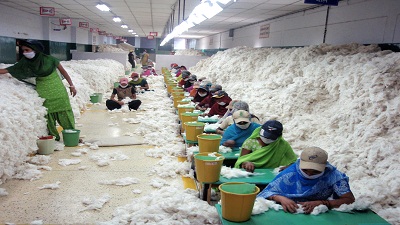
The choice of location for setting up a spinning mill depends on a number of decisive factors. An entrepreneur must reckon with different costs for energy depending on the location. Wages and their growth influence the decision about where an investment is successful. With textile industry on upward growth curve, investment opportunities are high, a spinning mill entrepreneur must be aware of the major factors that could affect business, and the risks and opportunities of his investment. An ITMF (International Textile Manufacturers Federation) report analyses that raw material and energy have a dominant influence on yarn costs. Other factors important for long-term success are: yarn manufacturing costs, the availability of trained personnel and market access.
Availability of raw materials
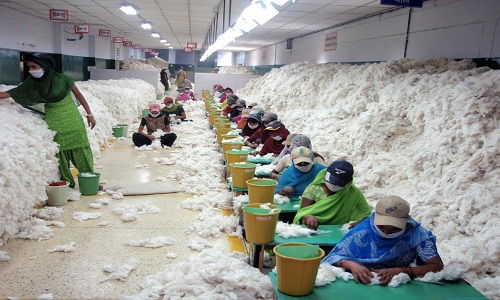
Today, the availability of cotton and synthetic staple fibers is not a problem. In 2013-14 season, for the third time in a row, the main production countries supplied more raw material than what was processed by spinning mills. In the case of cotton, in particular, 87 per cent of annual consumption is held in storage throughout the world. As an agricultural product fibers are not subject to the rules of the World Trade Organisation (WTO), there are regional differences in fiber prices.
In India, raw materials are cheaper than the other countries. Prices fluctuate less than on the international market, making planning easier. The price of raw material is the crucial factor for manufacturing yarn. As the prices of synthetic fibers usually follow cotton, this supports an investment in India.
Energy costs
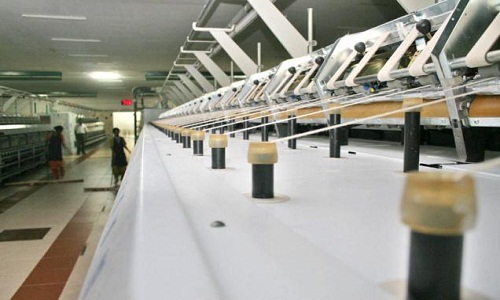
Studies show the great importance of energy consumption in relation to yarn manufacturing costs in spinning. A global look at average costs reveals that the price of energy has increased in some countries, at times significantly. Energy consumption depends on the spinning technology, age, condition and producer of the spinning machine, raw material and yarn count. Energy costs depend on consumption and local prices. A precise comparison on the basis of the planned product range is worthwhile in any case.
Availability of workforce In typical producing countries wages play a subordinate role in yarn production. Rather, the decisive issue is the availability of well-trained personnel. Automated spinning machines not only solve this problem, they also increase efficiency and yarn quality at the same time. Automation of the spinning mill is the solution for the non availability of trained work force.
Market accessibility In a global environment, the costs between manufacturer and customer are often underestimated - transportation, exchange rates and the hedging thereof as well as customs duties etc. Investment decision must take into account the cost of entire textile value chain. Growing domestic markets are attractive because exchange rate risks and customs duties do not apply and transport costs are low. Growing markets such as China and India are attractive for this reason. Good relations in mutual trade, which allow simplified, duty-free imports, influence decision regarding location.
Sustainable manufacturing costs
Competition will close, if yarn manufacturing costs alone are higher, excluding the raw material. The spinner who can offer lowest manufacturing costs with good, consistent quality establishes the most sustainable position in this competitive global marketplace.
"With the amendment of labour laws, women workforce will be able to work during night shift. As per existing norms, women are allowed to work only in the day. With the textiles sector being the second-largest employment provider with over 50 per cent coming in from women segment in rural India, it is important to facilitate women workforce adequate policy support to work during the night shift."
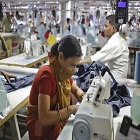
India’s new National Textile Policy is close to finalisation and expected by end of April, 2016 during the Budget session. The new policy is expected to accommodate a series of reforms to make India a truly manufacturing hub for textiles. The idea is for Indian textiles players to take maximum advantage of China’s slowdown in textiles sector.
Labour law amendments
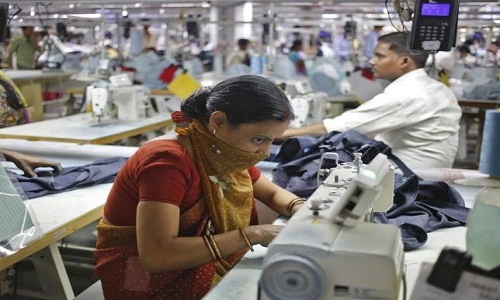
With the amendment of labour laws, women workforce will be able to work during night shift. As per existing norms, women are allowed to work only in the day. With the textiles sector being the second-largest employment provider with over 50 per cent coming in from women segment in rural India, it is important to facilitate women workforce adequate policy support to work during the night shift. The government has also laid specific focus on reducing transportation cost, as a result of which the cotton seed transport cost has come down by almost 25 to 40 per cent.
Initiatives galore
According to Santosh Kumar Gangwar, Minister of State for textiles, the ministry has given approval to 24 new textile parks which will create employment for an additional 4,50,000 people. In addition, the textile ministry has also written to the ministry of finance to lower interest rates to 7 per cent on working capital to which works out to 10.5 per cent. A sudden spurt in interest rates from 3.5 per cent to 10.5 per cent has resulted into many manufacturing units closing down and others facing huge squeeze in their profit margins.
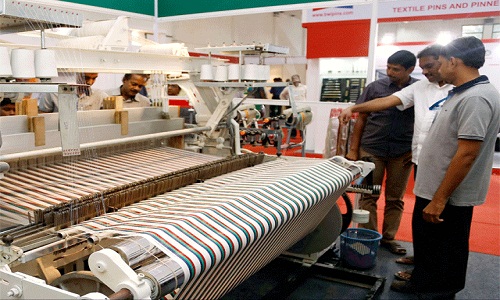
The government is looking into special incentives for manufacturing units being set up in the Northeastern states including Bihar, Jharkhand and West Bengal where cost of production would work out to lower than existing places like Maharashtra and Gujarat. Labour is cheap there. So, the pressure of high cost of production would certainly ease to certain extent, according to industry analysts. The government has focused on skilling of youth in various sectors. Through this, around 625,000 of skilled manpower have been given employment in textiles sector in the last 18 months.
Reaping from Chinese slowdown
According to Gangwar, the slowdown in Chinese economy has rendered cost of textile production in China high. So, Chinese textiles manufacturers have lost their competitive advantage in the last few months. This has offered an opportunity for Indian players to grab market share in the developed world especially the European Union and United States, which cumulatively consists of around 60 per cent of the global export market. This is the right time to increase our market share in exports, he opined.
Moreover, to cope with regional trade block agreements such as Trans Pacific Partnership (TPP) the government is working towards Foreign Trade agreement (FTA) with European Union and holding comprehensive discussions on the Regional Comprehensive Economic Partnership (RCEP). The government is in the process of reviewing existing trade agreements such as Indo-ASEAN FTA and Indo-Korea Comprehensive Economic Partnership Agreement (CEPA).
Apart from that the government would also facilitate exports schemes to promote textiles exports. In India, textile manufacturers are currently enjoying various exports incentives schemes including MEIS and duty drawbacks. The minster is confident that the, inclusive and participatory vision of the government would give long term benefits.
A global leader in color and specialty chemicals, Archroma and DKTE Society’s Textile & Engineering Institute, Ichalkaranji for Technical Textiles (DKTE), based in Kolhapur, India, have entered into a fice-year partnership aiming at sharing Archroma’s globally recognised expertise in the area of Technical Textiles and Nonwovens with the Institute’s faculty and students.
Under the partnership, Archroma will provide training sessions, as well as technical support and guidance to the students of the Institute. In particular, DKTE’s students will have access to some of Archroma’s technical laboratories in India and Switzerland for projects, experiments and trials.
Through the new arrangement, the students will also benefit from access to a range of functional products with application and performance characteristics critical to the industry, allowing them to gain hands-on training and learning, and help develop innovative solutions for new industry entrants. The DKTE’s faculty has already expressed special interest in Archroma’s Nuva® N water and oil repellent solutions, Pekoflam® non-halogenated flame retardant, Sanitized® antimicrobials, Appretan® solutions for textile strength and flexibility, or Hydroperm® hydrophilisizing agent.
Sustainable innovations have come to the fore in textile industry. A new technology that converts waste cotton into a raw material that can then be used to produce new textiles has been developed. This has won s won the largest slice of a $1.1 million grant backed by Swedish fashion giant H&M. The first Global Change Award from non-profit H&M Conscious Foundation is aimed at encouraging pioneering ideas on closing the loop in fashion.
Other projects that won include a polyester digester that uses microbes to recycle waste polyester textiles; an online marketplace for textile leftovers; an initiative to create new textiles out of by-products from citrus juice production; and a scheme that uses algae to grow textile fibers under water.
One technology uses an environmentally-friendly solvent to dissolve the cotton in textile waste – which can then be spun into new cotton-like fibers. This not only reduces landfill waste but also saves natural resources.
A new type of microbe breaks down waste polyester into its most basic substances, which can then be sold to polyester manufacturers to produce new textiles. Polyester is the world’s most common fiber for making textiles and clothes but is difficult to recycle since it is often mixed with other fibers. The new microbe process would work on textiles where polyester and cotton are mixed as well as dyed polyester.
Growing textile fiber under water also involves researching a new textile raw material derived from marine algae. One of its strengths would be to eliminate the need to transport textiles as production could be based at coastal regions around the globe. Winners of the Global Change Award will also get help to develop their ideas over the next year from H&M Conscious Foundation, Accenture and KTH Royal Institute of Technology in Stockholm, Sweden
Despite the increasing demand from textile and apparel industries, production of organic cotton is on the decline and poses a tremendous risk to both the environment and the future of sustainably-produced fabrics. The aim of the Organic Cotton Accelerator (OCA) - a multi-stakeholder initiative spearheaded in 2013 by US retailer Eileen Fisher and European brands C&A, H&M and Kering is to identify and fund interventions, strategies and new areas of development and opportunity to increase organic cotton production.
According to Shona Quinn, sustainability leader for Eileen Fisher, organic cotton production and innovation in the industry is critical to the future of sustainable apparel, namely her brand’s commitment to consumers who are already seeking lifestyle changes that often begin and end with their clothing purchases. OCA plans to set the standard for organic farmer training by establishing a central farmer curriculum, knowledge transfer, and best known agricultural and business practices to improve effectiveness. In addition to providing training curriculum, the OCA will create a distribution system to reach farmers with 100 per cent organic seeds to protect the integrity of cotton crops.
Meanwhile, the OCA’s established financing model will be made available to farmers in the form of revolving loans. The approximate numbers of available financing dollars and farmer repayment terms have yet to be revealed. OCA is set to launch this year in a two-year prototyping phase where selected farmers across India will participate during the incubation period — with the goal of increasing strategies to scale organic cotton production through 2018.
Apparel sector associates in Sri Lanka are to be supported by the country’s largest private bank with an exclusive debit card that confers special benefits, under a partnership between the Commercial Bank of Ceylon, the Joint Apparel Association Forum (JAAF) and Channel 17, the company tasked with managing an employee loyalty program for the sector.
Holder of the card will be eligible to receive extensive collection of discounts and offers normally enjoyed by Commercial Bank Debit Card holders. In addition to the benefits they are entitled to under the Ransalu program. The card will also serve as identification for them to claim benefits from the Ransalu loyalty program, which targets a membership of over 350,000.
Meanwhile, the Ransalu Privilege Loyalty Program already offers members discounts on essential consumer items, hospitalisation, pharmaceutical products and clothing. However, the JAAF membership targeted Commercial Bank – MasterCard issued ‘Ransalu Privilege Card’ will be available free of charge to any member of the JAAF operated Ransalu Loyalty Program who has, or opens an account with Commercial Bank.
Jute mills fear a financial crunch in the wake of the jute commissioner’s decision to fix the price of bags for January and February. They fear an estimated loss of Rs 70 crores in the two months following enforcement of the price cap (at around Rs 79,000 per ton).
The decision to fix price followed the spiraling rates of the raw fiber owing to excess rainfall, shrinking area under cultivation and an export ban imposed by Bangladesh. Average raw jute prices have increased to Rs 5,357 per quintal in January from Rs 4,034 per quintal in August.
This decision to fix prices has led to a situation where many mills are unable to manage their minimum working capital requirements, including wage payments and clearance of statutory dues. The stock limit of raw jute for traders has been lowered to 500 quintals from 1,700 quintals.
Meanwhile the new national textile policy may be unveiled by April. The policy aims to reach an export target of $300 billion by 2024-25 besides creating an additional 35 million jobs. The policy seeks to address concerns related to skilled workforce, labor reforms, investments and a road map for the textile and clothing industry.








